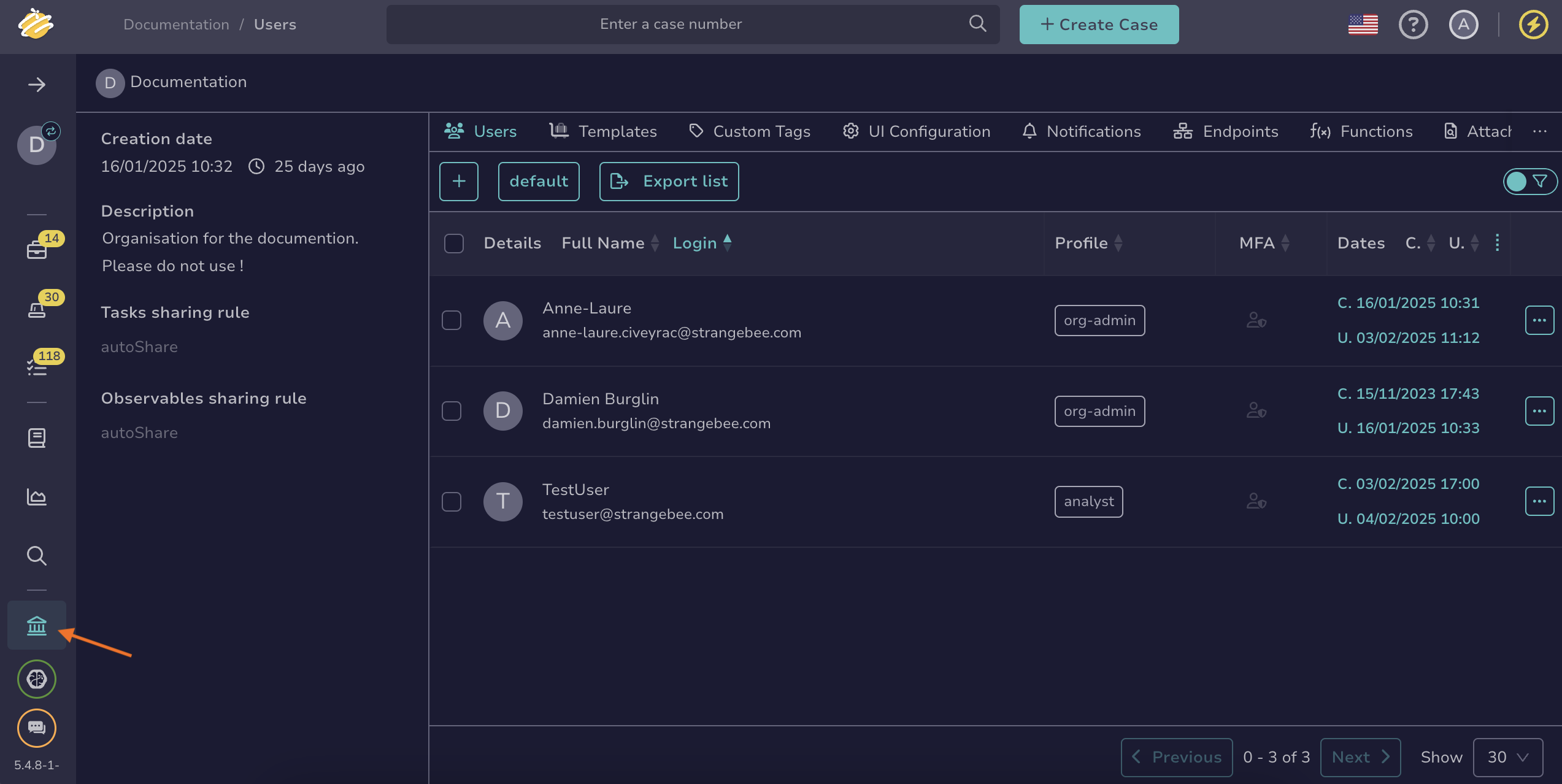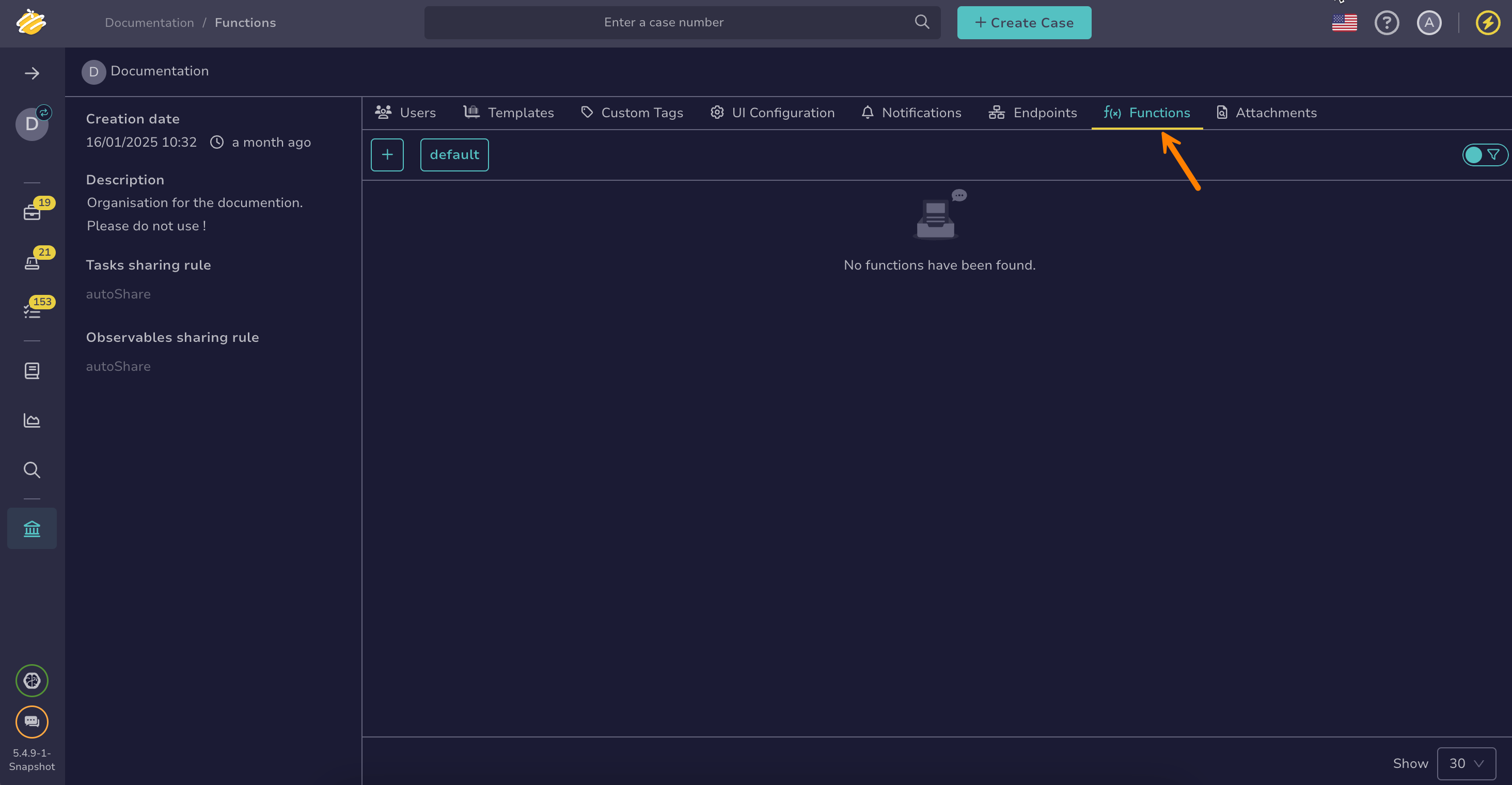Create a Function#
5.1 Platinum
Create a function to automate workflows, process data, and enhance case management in TheHive.
Procedure
-
Go to the Organization view from the sidebar menu.
-
Select the Functions tab.
-
Select .
-
In the Create function drawer:
- Name *
Enter the function name, which you will use in your HTTP call to invoke the function.
- Mode *
Select the mode you want to apply to the function. For more details on the available options, see About Functions.
- Types *
Select the type of the function. For more details on the available options, see About Functions.
- Description
Enter a brief description of the function’s purpose.
- Definition *
Enter the JavaScript code for your function. If you need inspiration, check out the GitHub repository with function examples.
Basic function structure
In TheHive, a function follows this basic structure:
function handle(input, context) { // Your function logic goes here }- The
handlefunction: This is where you write your script. Your function must be placed inside this structure. - The
inputparameter: This represents the data passed into the function. Its content depends on how the function is triggered. - The
contextparameter: This provides access to TheHive’s environment, allowing your function to interact with common TheHive actions.
Duplicate management
Make sure to implement duplicate management in your functions to prevent duplicate objects.
- The
-
In the Test function section, you can test your function as follows:
-
Enter input data by selecting input.
-
Select one of the following:
- Run function (dry-run) to simulate the function without sending data.
- Run function to execute the function with actual data.
-
After running the function, select one of the following to view results:
- result to view the function’s output
- stdout to display standard output from the function
- stderr to display errors and warnings
-
-
Select Save.

